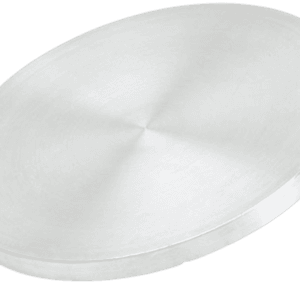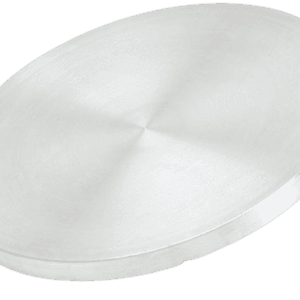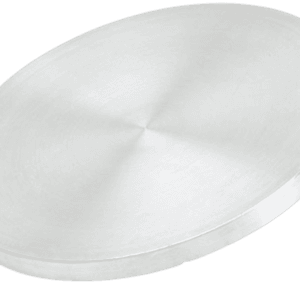CuCrO₂ Sputtering Target Description
TFM provides high-purity CuCrO₂ sputtering targets, a p-type transparent conductive oxide (TCO) material that has gained significant attention for its excellent optical transparency, electrical conductivity, and chemical stability. As a delafossite-type oxide, CuCrO₂ offers promising performance in next-generation transparent electronics, thin-film solar cells, and oxide-based transistors.
CuCrO₂ thin films can be deposited using RF magnetron sputtering or pulsed laser deposition (PLD) and exhibit high hole mobility, wide bandgap (~3.1 eV), and good thermal stability, making them suitable for demanding optoelectronic environments.
CuCrO₂ Sputtering Target Specification
| Property | Value |
|---|---|
| Chemical Formula | CuCrO₂ |
| Molecular Weight | 146.53 g/mol |
| Crystal Structure | Delafossite (rhombohedral) |
| Purity | ≥ 99.9% (3N) metals basis |
| Color | Grayish green or dark gray solid |
| Density | ~6.0–6.2 g/cm³ |
| Available Diameters | 1.0″, 2.0″, 3.0″, 4.0″, 5.0″, 6.0″ |
| Thicknesses | 0.125″, 0.250″ |
| Bonding Options | Indium or elastomer bonding to copper backing plate |
Custom dimensions, compositions, and backing plates are available on request.
Applications of CuCrO₂ Thin Films
p-type Transparent Conductive Oxide (TCO) layers
All-oxide solar cells (e.g., CuCrO₂/ZnO heterojunctions)
Oxide Thin Film Transistors (TFTs)
Photodetectors and UV sensors
Flexible optoelectronic devices
Thermoelectric materials
CuCrO₂ is especially valuable because it complements widely-used n-type TCOs like ZnO or ITO, enabling all-oxide p-n junctions for transparent electronics.
Handling and Processing Notes
Elastomer bonding is recommended due to its brittle ceramic nature and moderate thermal conductivity.
Avoid rapid thermal cycling during sputtering to reduce cracking risk.
Use RF sputtering for stable stoichiometry control in oxide environments.
Packaging and Quality Assurance
Each CuCrO₂ sputtering target from TFM is:
Individually packaged in vacuum-sealed anti-static bags
Labeled with composition, purity, batch number, and dimensions
Tested for density, phase purity, and mechanical integrity
All targets are handled in cleanroom conditions to ensure zero contamination and reliable thin film performance.
Get Contact
TFM specializes in advanced oxide materials for thin film deposition. Our CuCrO₂ sputtering targets are available in standard and custom configurations, with expert support for lab-scale or industrial production environments.
Contact us for a quote or technical datasheet.





Reviews
There are no reviews yet.